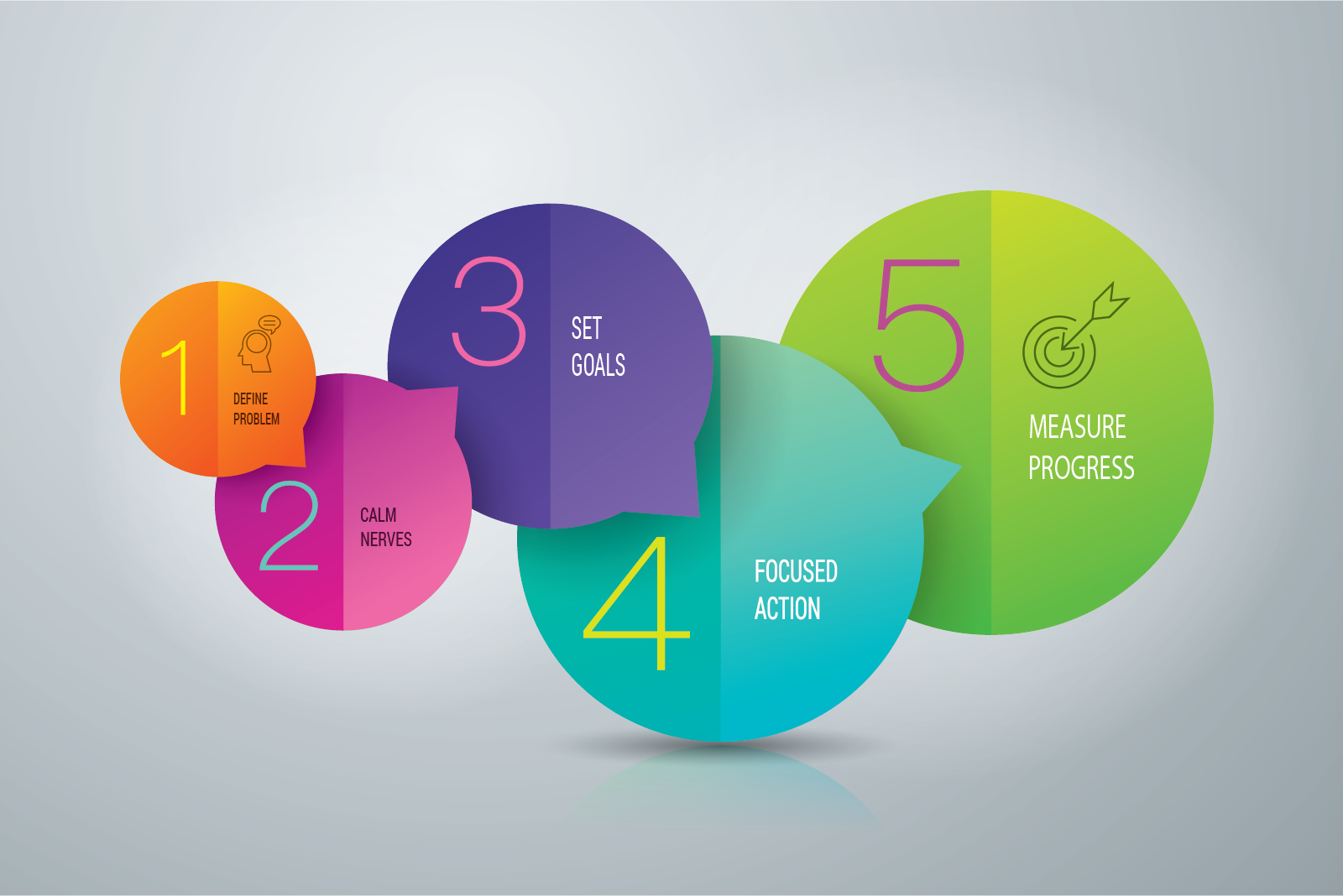
The Mulry 5-Step Method For Internal Locus Of Control
To improve your life you want a strategy for positive change
Creating positive life-changes occurs best when you have a strategy
Just like when planning for a road trip. You want to know where you are going and why, how long it will take and you must have short and long term goals. This is where Locus of Control enters the scene. If you feel your progress is the result of skills you have and have a strategy for change, chances are you will make steady progress in the right direction. This is referred to as Internal Locus of Control (LOC) in Social Learning Theory (SLT). If you feel, in general, things work out as a matter of good luck and the actions of powerful others, this is referred to as External Locus of Control. This makes a huge difference and it has been demonstrated time and again, though out numerous research studies, Internals basically come out ahead over Externals in just about every pursuit.
(1) The first step in the Mulry Method – Define the Problem
The more precise your understanding of a concern, the more likely you will engage in constructive problem solving behaviors. This is where the Personal Concerns Inventory (PCI) comes into play.
A Personal Concern, as defined within the context of SLT is:
-
a) high expectancy for unfavorable outcomes or
-
b) low expectancy for favorable outcomes.
Examples:
I fully expect I will lose the job I love OR I don’t expect I will get the job I might apply for.
In both cases, we are stating an anticipation and this sets the stage for failure and a low probability for positive Focused Action. Negative expectations are highly disrupting and damaging, unless the negative expectations have some basis in an objective reality such as not expecting to get a job as a Rocket Scientist with no training in Physics, as much as you would like to be a Rocket Scientist.
When you study Polyvagal Theory offered within our PPPeLearning mini courses, you will discover a similar “visceral anticipation” referred to as neuroception; a gut level feeling something is going awry or will be going awry. So, when negative expectancies (cognitive) processes align with negative neuroceptions (visceral) you will observe avoidant, self-defeating behaviors. (For those wanting to serve as a Certified Life Coach In The Zone, this is a pivotal issue and you want to have a clear and complete understanding of how SLT and Polyvagal Theories intersect and complement each other – as we seek mind/body integration with a full-body attitude).
It is important you complete the Personal Concerns Inventory, or PCI, which presents over 1000 possible Personal Concerns. Finding your focus is your most important step toward positive personal change. (It takes about 20 minutes online).
Find Your Focus
Overcome Indecision
Create a Winning Strategy
Use the Power of Mindfully Directed Attention
Succeed through Focused Action
(2) The second step in the Mulry Method – Calm Nerves
Emotions are physiological events and are physically present and experienced in your body. Do Relaxation Therapy (RT) to switch on the parasympathetic nervous system which is your rest and digest system.
Doing RT generates Vagus Nerve activity which leads to release of Acetylcholine, a neurotransmitter and your built-in natural tranquilizer. 20 minutes of RT, known as a Power Nap, does much to stabilize and balance your emotions. You are getting ready to engage in goal setting with a clear head, without troubling, distracting emotions.
(3) The third step in the Mulry Method – Set Goals
Using the Social Learning Theory (SLT) model for resolving personal concerns, identify your Primary Concerns in precise terms.
Example: I am drinking too much means I am now drinking 6 drinks a day and want to drink only 2.
This is an important issue because most people do not have clearly defined goals and live out their days with vagueness and the illusion, they have a good handle on what they want to do. Thus, they generally do little, leaving them with perpetual confusion and emotional turmoil as to what they truly want to do and then how to do it.
(4) The fourth step in the Mulry Method: Focused Action
Focused Action is the strategy you have developed to accomplish your goals. It must be precise, leaving little room for indecision. You know your goals, have decided how you want to accomplish them and now, want to do what it takes for positive outcomes.
(5) The fifth step in the Mulry Method: Measure Progress
You started out in Step 1 measuring your personal concerns with the PCI. Now, you can use the PCI to measure tour progress. If your goals are clear and you have a precise Focused Action Plan, you should be moving forward. Your “This is Me!” report reveals how you feel about your progress and your PCI self-ratings will decrease as your level of concern decreases.
Remember always, be truthful and honest with yourself so you
are dealing with your own reality. You become what you do and if you are doing what it takes to resolve your concerns, your self-assessments will tell the true story. WHAT GETS MEASURED IS WHAT GETS DONE.
What does a disposition of Internality generate in terms of rewards and goals achieved?
Here are the research results with Internals coming out ahead:
- Internals are happier
- Have higher hourly wages
- Express greater well-being
- Have superior cognitive functioning
- Engage in healthier behaviors
- Take responsibility for themselves
- Are less prone to learned helplessness
- Forget failure experiences more easily
- Respond more constructively to trauma and challenging life changes
- Make better use of information when problem solving
- Are more creative and motivated to be innovative
- More likely to complete distance learning courses
- Are better leaders, are more caring and less aggressive
- Are more responsive to their counselors and therapists
- Experience a higher quality of life
- Are more likely to return to work regarding a Workers’ Compensation claim
- Oh yes, and less jail time
A large number of scientific articles have been devoted to the study of LOC documenting LOC as the third most cited publication topic between 1965 and 1975 by numerous independent researchers, all coming to the basic conclusion: The single most important thing you can do to successfully achieve in your academic endeavors is to be Internally motivated. This is the objective of Positive PERFORMANCE Psychology (PPP), the Mulry Method and our comprehensive suite of online PPP e-learning courses.
In an ideal world, everyone would be Internally motivated.
LIFE COACHING IN THE ZONE – FEATURING – INTERNAL LOCUS OF CONTROL
The Mulry Method builds upon the neuroscience declaring “We Become What We Do.”
Successful Life Coaching is not an accident any more than fixing a mechanical issue with your car. You want a clear understanding of your goals such as fixing the problem or trading the car in. You want clearly defined FOCUSED ACTION and then proceed toward positive outcomes such as,” I now have a car that is fully functioning and I can move on to the next issue” because there is always A NEXT ISSUE. Internals know this, plan for the same, and execute clearly defined strategies for success.
Resolution of Personal Concerns does not come about by chance or by the actions of powerful others. YOU want to set the process in motion, which may involve engaging another person such as an auto mechanic, but the decision to move forward lies in your hands. Once again, YOU BECOME WHAT YOU DO and YOUR BEST STRATEGY IS FOCUSED ACTION

